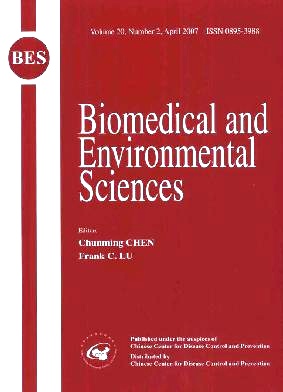NaFeEDTA Fortified Soy Sauce Showed Higher Iron Absorption Rate in Chinese Females
-
Key words:
- NaFeEDTA /
- FeSO4 /
- Iron absorption /
- Stable isotopes /
- Dietary pattern
Abstract: Objective NaFeEDTA was considered as a promising iron fortificant for controlling iron deficiency anemia. Soy sauce is a suitable food carrier for iron fortification and is a popular condiment in China. Iron absorption rates of NaFeEDTA and FeSO4were observed and compared in adult female subjects. Methods The stable isotope tracer method was used in Chinese females consuming a typical Chinese diet. Ten healthy young Chinese women were selected as subjects in the 15-day study. A plant-based diet was used based on the dietary pattern of adult women in the 1992 National Nutrition Survey. Six milligram of54Fe in 54FeSO4 soy sauce and 3 mg 58Fe in Na58FeEDTA soy sauce were given to the same subjects in two days. Food samples and fecal samples were collected and analyzed. Results Iron absorption rates of NaFeEDTA and FeSO4 were 10.51%±2.83and 4.73%±2.15 respectively. The 58Fe (NaFeEDTA) absorption was significantly higher than that of 54Fe (FeSO4) (P<0.01).The iron absorption rate from NaFeEDTA was 1.2 times higher than that from FeSO4 in Chinese adult women consuming a typical Chinese diet. Conclusion The higher absorption rate of NaFeEDTA suggested that NaFeEDTA would be a better iron fortificant used in soy sauce for the controlling of iron deficiency anemia in China.
| Citation: | JUN-SHENG HUO, XIAO-GUANG YANG, JIAN-HUA PIAO, JUN-QUAN GAO, HONG MIAO, Bo YU, CHENG-QIAN LU, JUN-SHI CHEN. NaFeEDTA Fortified Soy Sauce Showed Higher Iron Absorption Rate in Chinese Females[J]. Biomedical and Environmental Sciences, 2007, 20(2): 126-130. |







 Quick Links
Quick Links
 DownLoad:
DownLoad: